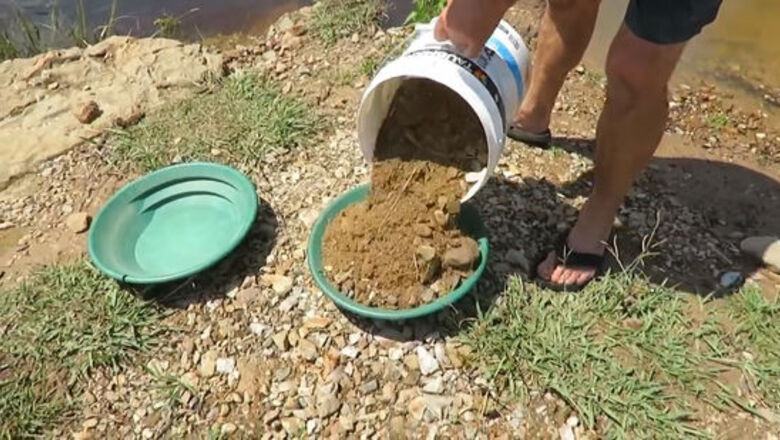
views
Washing Out Larger Rocks and Moss
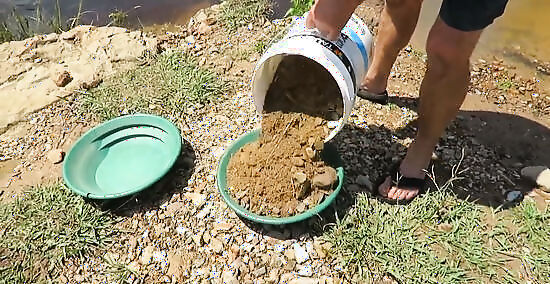
Fill your pan so it is ¾ full of gravel. Submerge it in the water so it is just under the surface of the water.
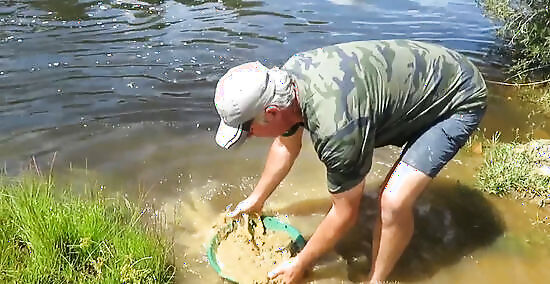
Shake the pan vigorously several times. Shake it back and forth and side to side. Make sure you do not shake so intensely that materials get washed out of the pan.
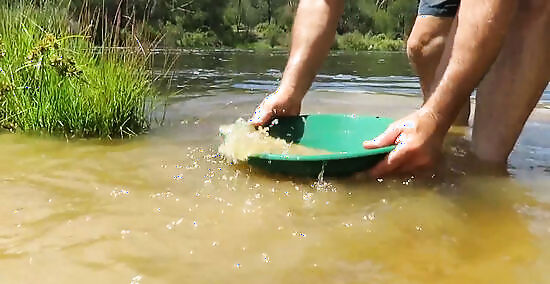
Stop shaking the pan and begin using a gentle circular motion. The gravel should begin spinning in a circle inside the pan. Doing this will make most of the dirt and clay wash out of the pan or dissolve. Roll any roots or moss over the pan with your fingers--doing this will make certain that any potential gold-containing dirt gets caught by the pan.
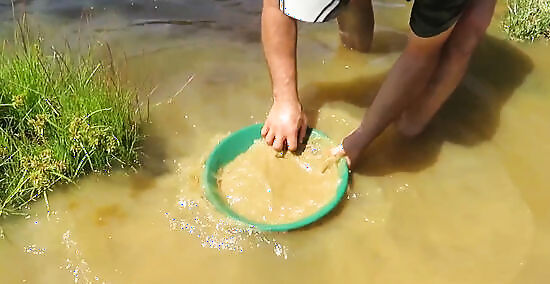
Pick out the large rocks. Make sure they are washed clean (they should be after following these steps. Repeat these steps until all the large-ish rocks have been removed and the heavier concentrates (such as gold and sand) have settled at the bottom of the pan.
Washing Out Lighter Sand and Gravel
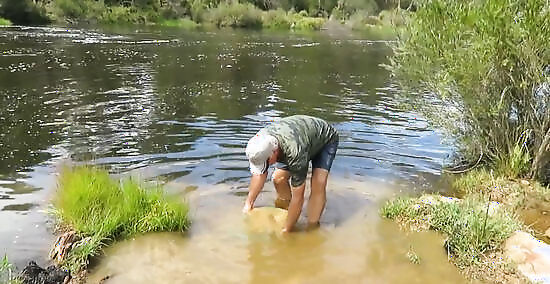
Hold your pan just under the water, making sure that it is fully submerged. Tilt the pan slightly away from you so that it looks like you are trying to catch the current of the water.
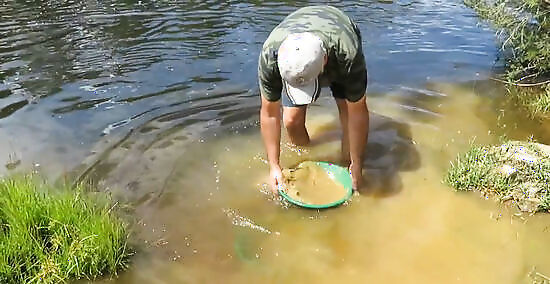
Swirl the pan from side to side. Use a slight forward tossing motion as if you were on the verge of flipping a hotcake (but don’t actually flip the contents of the pan). Be cautious but use enough force to move the surface of the pan and the lighter gravel out over the edge of the pan.
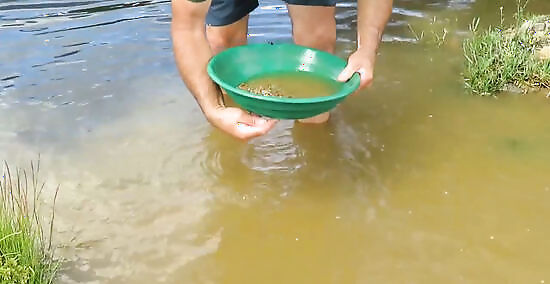
Level the pan flat. Shake it back and forth while it is still in the water. Leveling and shaking the pan will cause the gold to settle to the bottom of the pan and the lighter material to come to the top.
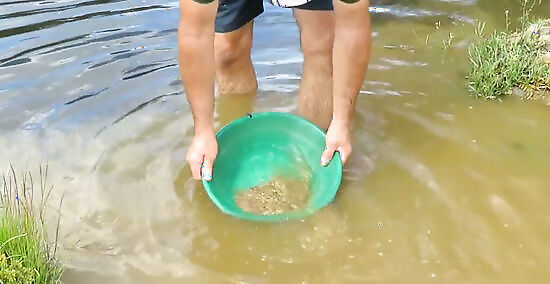
Repeat this process several times. When you finish this part of the panning process, there should only be about two cups of heavier material left in your pan. There should not be anymore rocks or pebbles. The materials remaining in the pan are the heaviest. They consist of black sand, or ‘concentrates’, and, if you’re lucky, gold.
Washing Out Black Sand
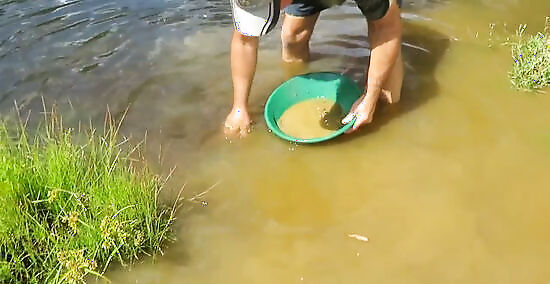
Raise the pan out of the water. Make sure there is about an inch of water left in the pan. The water is necessary because you will continue to sift the sand from the gold when the pan is taken out of the stream.
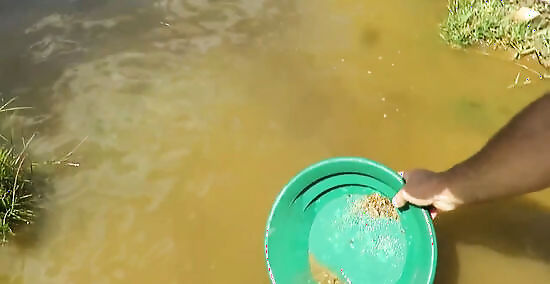
Tilt the pan towards you slightly. Swirl the water and materials slowly in a circle. Doing this allows you to check and see if there are any larger nuggets or pieces of gold that can be picked out by hand. If you do find nuggets, place them in the container that you will store your gold in. This could be a legitimate gold sample bottle purchased at a store, or a jar or pill bottle found at home.
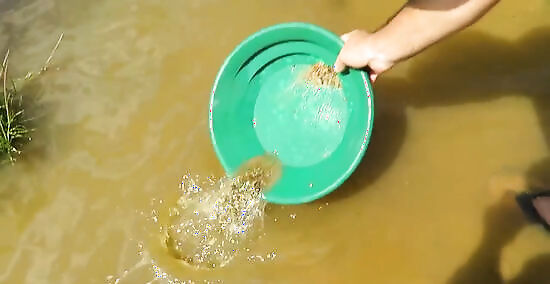
Submerge the pan in the water again. Repeat the steps of part three (alternating back and forth between swirling the pan and leveling and shaking it.) Make sure to be extremely careful when using this step--if you shake your pan too vigorously, you may lose some of your gold.
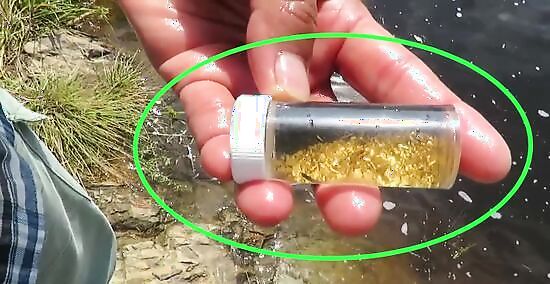
Use a magnet if you have a plastic pan. Remove the pan from the stream, keeping as little water as possible in the pan. Place a magnet on the bottom side of the pan and slowly move it around the pan. Black sand is magnetic and will be attracted to the magnet. This process will quickly separate the black sand from the gold. If you choose to use the magnet, you can either scoop the trapped black sand out, or use a gold snifter bottle. Snifter bottles have a sucking tube attached to the top (just like eye drop bottles, which you can use for a store bought snifter.) When you squeeze the bottle, a vacuum is created. When you release the bottle, it will suck up whatever its pointing at (in this case, gold and water.) Your gold will then safely be in the bottle.
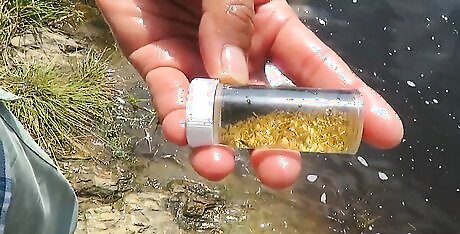
Pour the rest of the black sand and gold into a bottle. Once you have sifted as much black sand as possible from the gold, it is best to pour the combination into a bottle. The safest way to pour the pan’s contents into a bottle is to place a funnel on the mouth of the bottle. Pour the pan’s contents into the bottle.
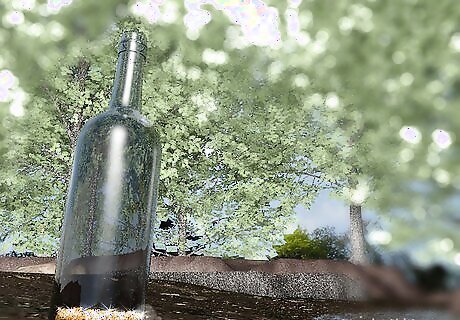
Feel free to yell out ‘Eureka!’ once you have separated all the gold. You are now a genuine prospector.
Picking Your Panning Location
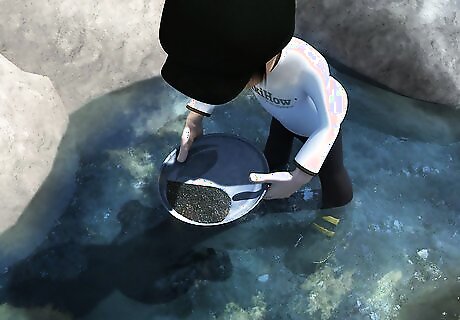
Go to a stream or river where you have heard gold has been found. Whether there is a family spot, you’ve heard legends about a certain stream, or you just have a hunch, there is generally some truth behind the wives tales and family stories. While you may think that because a spot has already been panned there won’t be any gold left, this isn’t the case. Streams and rivers carry small flakes and nuggets from upstream deposits. Every winter, storms unearth more gold, and that gold could be yours.

Pick a spot along the side of the stream or river. The spot you pick should have water that is a minimum of six inches deep. If it is any shallower than that, the water might be too muddy or filled with leaves and other debris to get a good look at your pan when it is under the water.
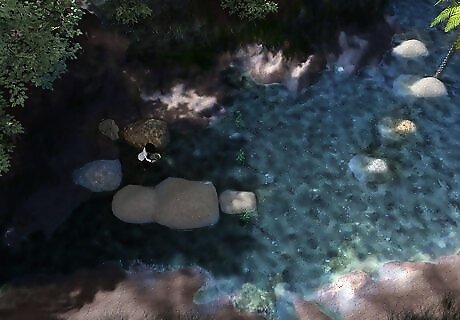
Pick a spot with a slow current. The water should be moving fast enough to carry away the silt and debris you sift out of your pan, but slow enough the water will not upset your panning motions when your pan is submerged.
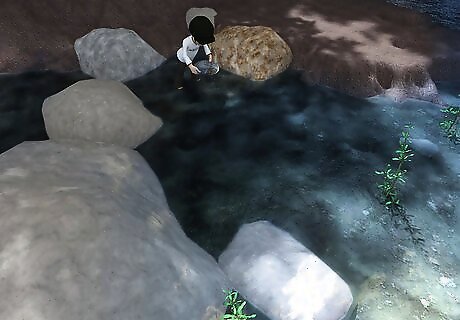
Pick a spot that has large rocks or a fallen tree along the water’s edge. This is optional but a large rock that you can sit on while prospecting will make your day much easier (and your legs and back will thank you).
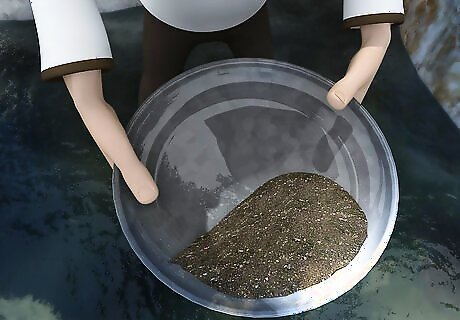
Pick your pan. Standard pans are either metal or plastic. Plastic pans are better for beginners because they are rust-proof, lighter in weight than metal pans, black (which allows the gold to be seen better) and they can be textured with ribs to catch gold. If you do use a steel pan like the 49ers of yore, make sure to remove any oil from its surface. (If you are using a newly bought pan, you shouldn’t have to worry about oil.) Remove oil by holding the pan over a campfire with a pair of tongs or fireproof gloves. Heat the pan to a dull red glow and then dunk it in water. This process removes the oil and leaves the pan with a dark blue color that makes seeing the gold easier.
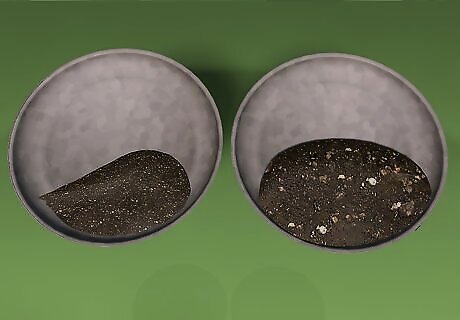
Understand the panning sieve. Sieves can be set over a pan and will separate the large items from smaller ones. It is not necessary to use a sieve but they can be helpful, when sifting the gold from black sand and concentrates.



















Comments
0 comment